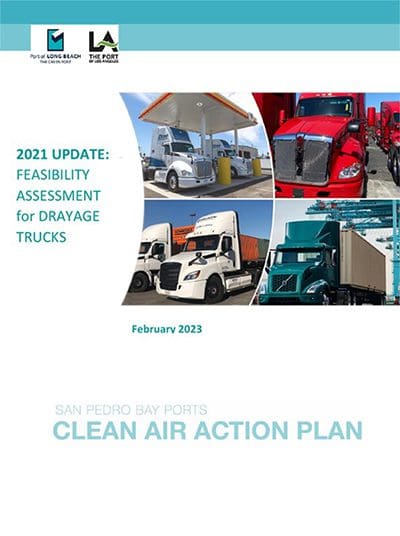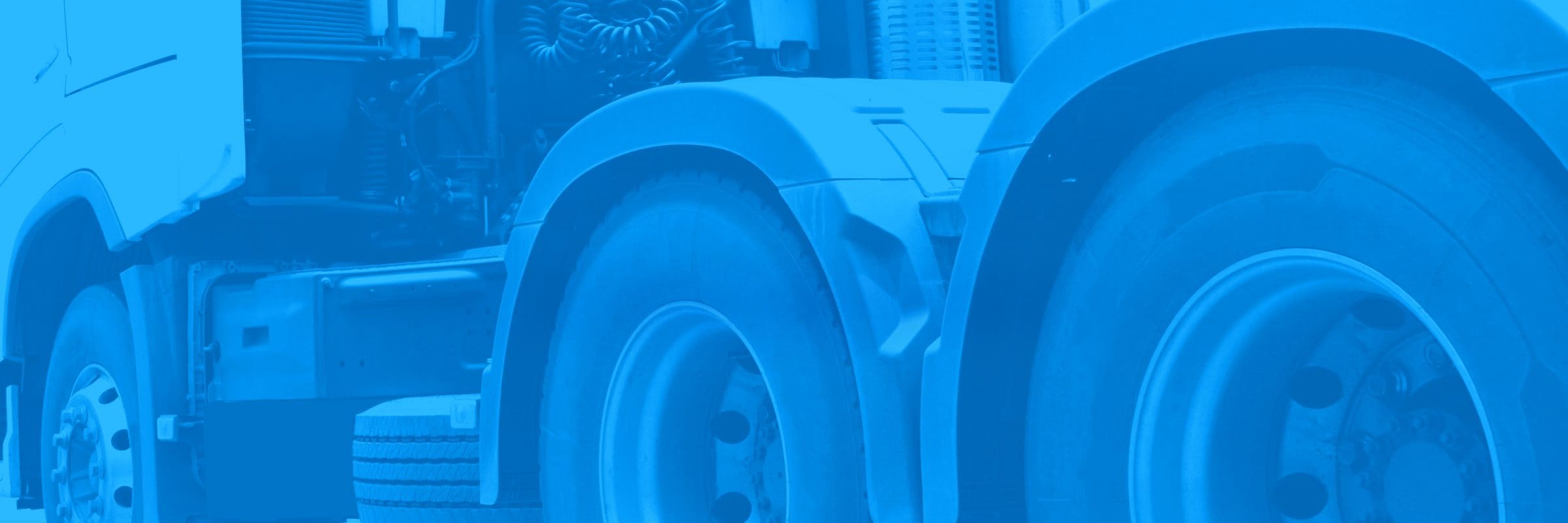
2021 Feasibility Assessment for Drayage Trucks
Published February 2023
Client: Port of Long Beach, Port of Los Angeles
The San Pedro Bay Ports Clean Air Action Plan (CAAP) 2017 Update established the need to prepare feasibility assessments to evaluate the status of technology and supporting infrastructure that will be required to achieve the various CAAP strategies. This 2021 Feasibility Assessment for Drayage Trucks follows on and updates the initial Assessment performed in 2018. As with the 2018 version, this 2021 Assessment is intended to evaluate the current state of zero-emission (ZE) and low-emission (LE)1 fuel-technology platforms suitable for drayage-capable Class 8 trucks – including infrastructure readiness to fuel and service them. The Assessment’s overarching objective is to characterize feasibility for near-term (2021 to 2024), large-scale deployments of drayage trucks using such platforms.
This Assessment provides a snapshot about which ZE and/or LE Class 8 platforms are feasible today – or will likely be feasible by 2024 – for widespread deployment in drayage at the San Pedro Bay Ports (SPBP or Ports) complex. Please refer to the “Framework for Clean Air Action Plan Feasibility Assessments” document (2) for the overall process and intent as laid forth in the CAAP. This Assessment is not meant to be a policy document, nor to inventory emission reductions that could be realized through the use of ZE and/or LE drayage trucks, nor to characterize the associated health benefits. It is not meant to establish timelines for meeting various CAAP goals, or forecast commercialization (especially beyond 2024).
Using the same basic methodology as the inaugural 2018 report, this 2021 Assessment uses tables to summarize ratings about the relative degree to which various Class 8 truck fuel-technology platforms are deemed to be “feasible” today. This is done for four key feasibility parameters: Commercial Availability, Operational Feasibility, Infrastructure Availability, and Economic Workability. A different rating system is used to gauge Technical Viability. For each main feasibility parameter and the individual criteria that define it, these tables show “pie wedge” ratings in quarter increments. As the above figure shows, ratings range from “little/no achievement” for a given feasibility criteria, to “fully achieved” today. Note that the rating system for this 2021 Assessment has been updated to include blue wedges, which highlight changes (improvements) in feasibility ratings (if any) since the 2018 Assessment.
The use of pie ratings is not meant to represent precise percentages of achievement for a given feasibility criteria. Rather, these ratings summarize the relative degrees of progress towards full or near-full achievement.
This Assessment does not include end user monetary incentives when calculating feasibility for every parameter. Incentive sums fluctuate, have uncertain long-term availability, and are not necessarily available to all end users. Thus, certain costs calculations presented in this Assessment were based on non-incentivized totals.
This Assessment was prepared over many months based on significant outreach, research, and stakeholder feedback. The final document – as well as any public comments received – will be reported to the respective Boards of Harbor Commissioners and posted at www.cleanairactionplan.org. The Ports intend to continue preparing updated drayage truck feasibility assessments at least every three years. This will be done more frequently if warranted by new, relevant information. For example, the ports may decide to annually update portions of this Assessment if new ZE and/or LE technologies become commercially available from Class 8 truck OEMs, and/or if there is a breakthrough development with charging/fueling infrastructure.
